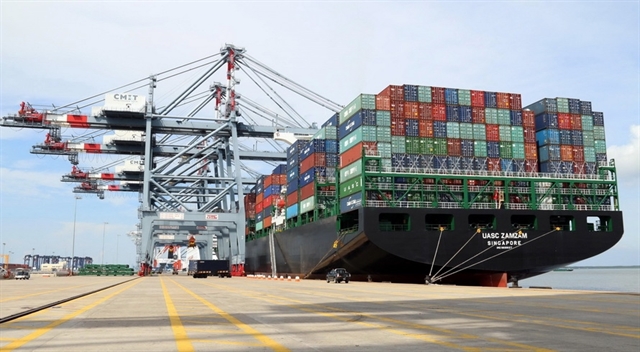 Economy
Economy

Development of major ports and port clusters will get priority in the new master plan for the country’s port system for 2021-2030, Deputy Minister of Transport Nguyễn Nhật has said.

|
| Tân Cảng- Cái Mép international terminal in Bà Rịa-Vũng Tàu Province. VNA/VNS Photo |
HCM CITY — Development of major ports and port clusters will get priority in the new master plan for the country’s port system for 2021-2030, Deputy Minister of Transport Nguyễn Nhật has said.
Speaking at a conference held by the Việt Nam Maritime Administration in Hải Phòng City on Wednesday, he said the development of a synchronised seaport network would be essential to meet the burgeoning export demand and keep pace with the country’s socio-economic development.
Việt Nam lacks a large international standard port while a number of small ones have inadequate infrastructure, resulting in inefficient port operations, according to the deputy minister.
The plan seeks to improve the efficiency of investment in ports, promote marine infrastructure and connectivity with other transport infrastructure and reduce logistics costs.
It targets increasing annual cargo capacity to 1.14-1.42 billion tonnes and passenger capacity to 10.1-10.3 million by 2030, and to fulfil these targets, international maritime gateways in the northern city of Hải Phòng, the southern province of Bà Rịa-Vũng Tàu and the central economic zone will be given priority for development of major ports and clusters that can accommodate large container ships.
Nhật called for focusing on Hải Phòng and Cái Mép ports and developing them into international standard ports.
The cost of developing a port system is estimated at around VNĐ150-200 trillion (US$6.4-8.6 billion) over the next 10 years without including the cost of specialised ports and berths.
The country’s ports have attracted enormous investment in recent years, resulting in a steady increase in cargo capacity, he pointed out.
Despite the impact of the COVID-19 pandemic, Việt Nam’s ports handled more than 689 million tonnes of cargo in 2020, a 4 per cent increase from the previous year.
As of 2019, there were 34 ports in the country with 588 berths and a total cargo capacity of 664.6 million tonnes a year. —VNS




